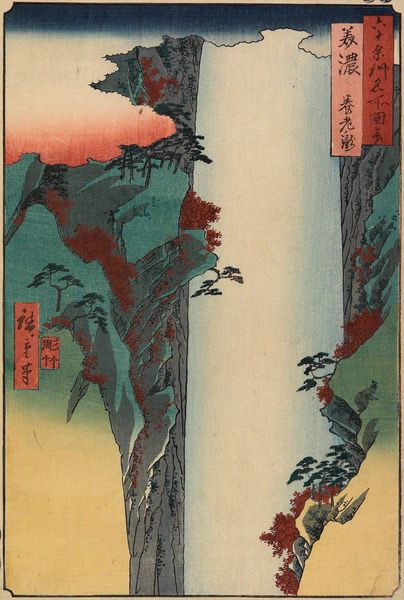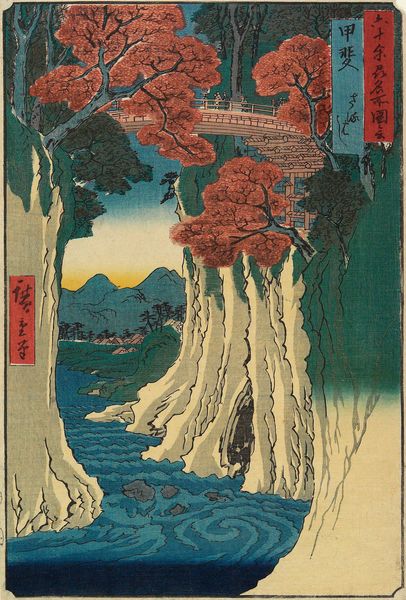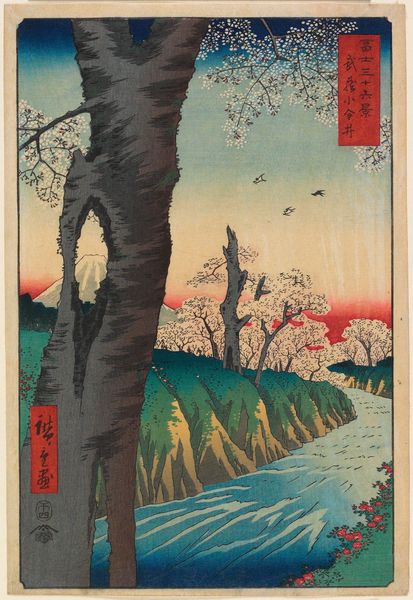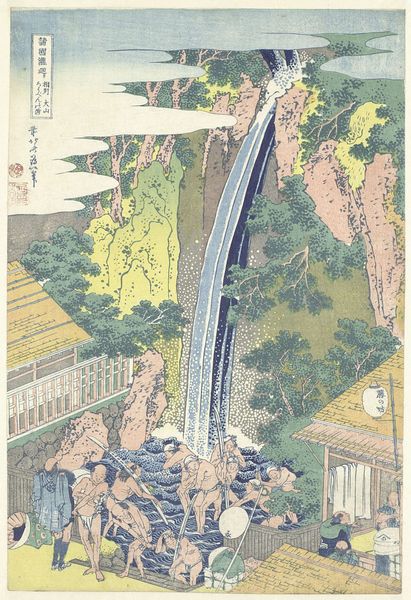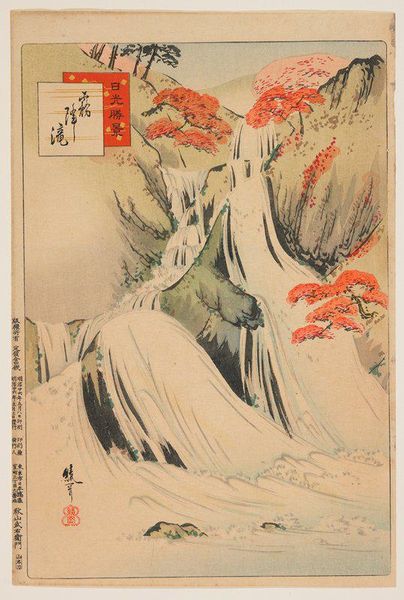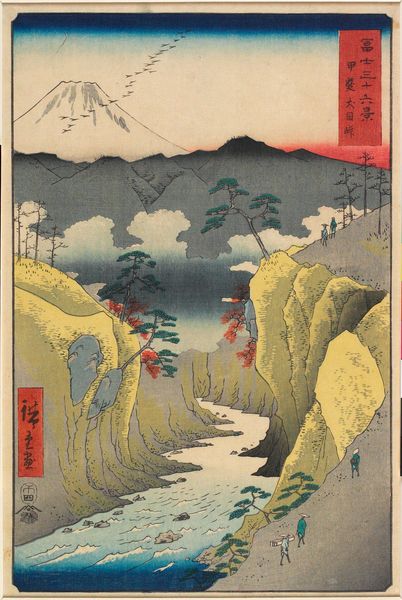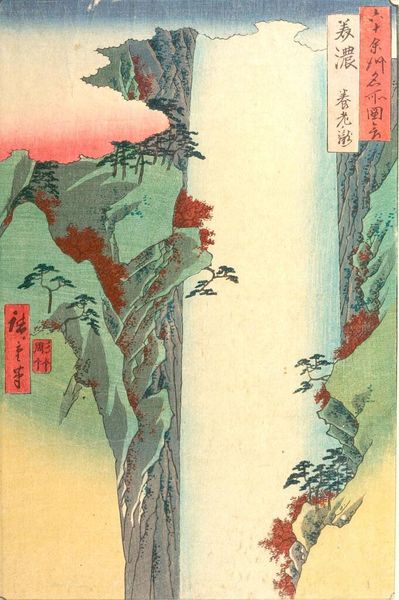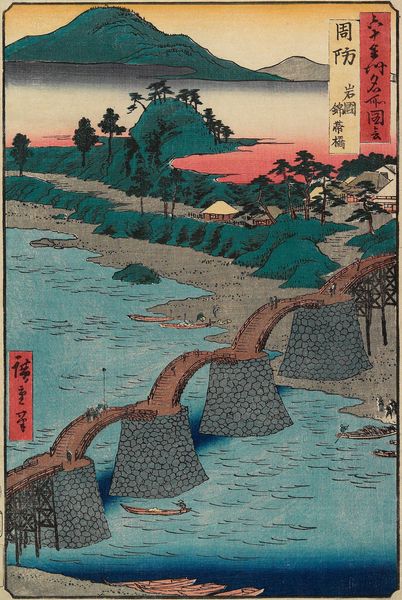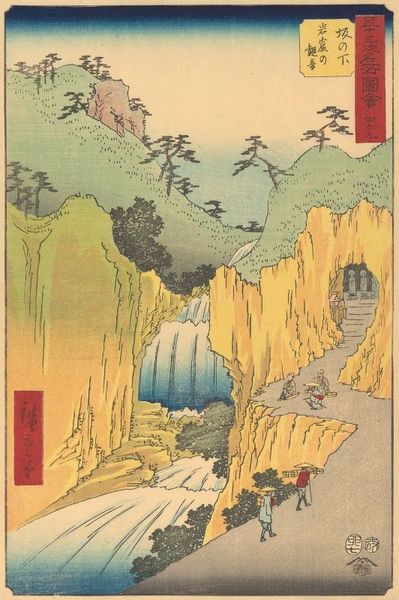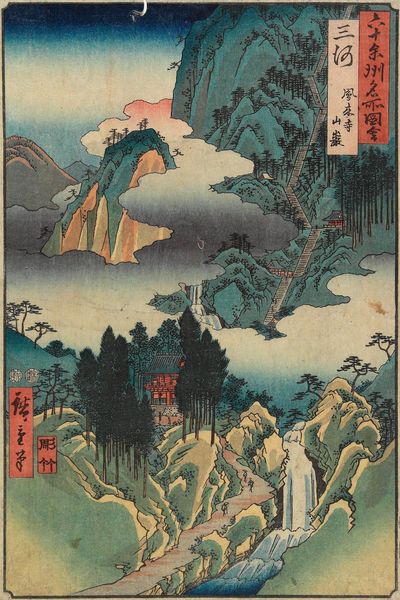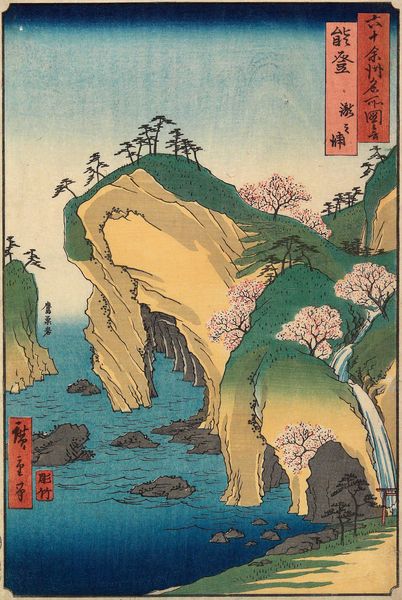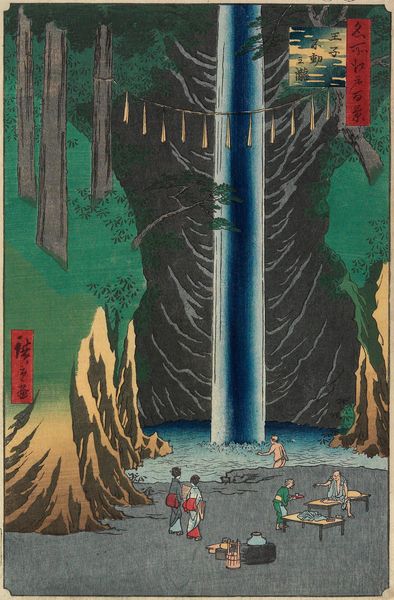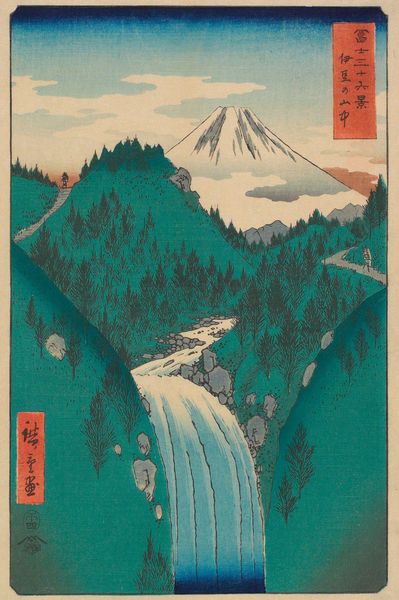
Falls seen from Behind at Nikkō Mountain Possibly 1853 - 1858
0:00
0:00
print, paper, watercolor, ink, woodblock-print
# print
#
asian-art
#
landscape
#
ukiyo-e
#
paper
#
watercolor
#
ink
#
coloured pencil
#
woodblock-print
Dimensions: 13 9/16 × 9 in. (34.4 × 22.8 cm) (image, vertical ōban)
Copyright: Public Domain
Curator: Standing before us is "Falls seen from Behind at Nikkō Mountain," a work attributed to Utagawa Hiroshige, likely created between 1853 and 1858. It’s a woodblock print, utilizing ink, watercolor, and coloured pencil on paper. Editor: Wow, the sheer scale! Even in this two-dimensional form, that waterfall feels immense. The composition almost overwhelms the tiny figures walking along the path. There's something really dynamic and dramatic about it. Curator: Absolutely, and what’s fascinating is Hiroshige's deliberate choice of the woodblock printing process itself. This wasn't just a reproduction method, but a careful orchestration of labor. Each colour, each line, meticulously carved and layered, a testament to collaborative craftmanship involving the artist, block carvers, and printers. It speaks to the democratization of art viewing; multiples of the print were made and distributed at prices regular people could afford. Editor: That brings up interesting questions about access and representation. Consider the context: this piece emerges from a society structured by hierarchies, and Hiroshige chooses a scene in nature, far from those societal structures, yet people seem able to exist comfortably within that landscape. This suggests a complex relationship with nature, one of both reverence and exploitation perhaps? Curator: Precisely. We must consider how readily available the wood and the ink must have been to make such prints possible. Editor: Yes, thinking about the cultural value then placed on certain kinds of labor versus others, also becomes an act of empowerment. These landscape prints also circulated broadly in a time of social upheaval, a need to remember a rural idyllic life as more people flooded into urban spaces, an assertion of identity tied to land as urbanisation advanced. The scene hints at resistance perhaps. Curator: Or at least the persistence of the rural in the face of an ever-expanding urbanity. We can also see in the application of colour the evidence of careful, yet commercial processes that were undertaken, highlighting an increased integration of manufacturing processes into artistic creation, further illustrating how these material conditions are not isolated decisions of creativity but integrated realities, creating more inclusive experiences by increasing output volume and improving distribution. Editor: And so this seemingly simple landscape pulls us into a complex dialogue, revealing socio-political undertones within what first appears to be a serene scene of natural beauty. Curator: Indeed, examining both the artwork's materials and historical context illuminates its layered meaning. Editor: Leaving us with much to ponder beyond the picturesque vista.
Comments
No comments
Be the first to comment and join the conversation on the ultimate creative platform.
